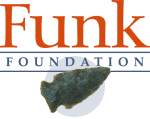 |

|  |
 |
 |  |
 Funk Foundation Fellowships for Archaeological Research Funk Foundation Fellowships for Archaeological Research
Awarded Fall 2005
Environmental Reconstructions in the Lake Erie Basin of Western New
York, by David A. Ingleman, Staff Archaeologist, University at Buffalo
(with bone analysis to determine seasonality by Stephen Cox Thomas,
Bioarchaeological Research, Toronto, for article in the Bulletin of the
New York State Archaeological Association)
“The Martin site (UB 214), located near the southern tip of Grand Island in
[the Niagara River] is a multi-component, Early Archaic to Late Woodland
(ca. 10,000–500 BP) prehistoric settlement. The site was excavated by
SUNY at Buffalo archaeological field schools… producing one of the
largest prehistoric artifact collections in western New York including an
extensive faunal collection dominated by fish bones. The collection is
curated at SUNY at Buffalo Marian White Anthropology Research Museum
and offers an opportunity to learn a great deal about prehistoric fishing in the
Lake Erie basin, [including aspects of seasonality and spawning ground
locations]. Zooarchaeological analyses indicate that at least 16 different fish
species were exploited at the Martin site…. Net fishing is inferred from the
recovery of more than 30 notched stones or ‘net sinkers’… Season of
occupation is an important research question for the Martin site and the
contents of Feature 12 [dated to Cal 1900-1720 BP (40-230 CE) and Cal
1920-1730 BP (30-220 CE)]. If for example the walleye were captured in
winter, then ice gill netting is a possible technique of capture. During the
Middle Woodland period the most effective technology for capturing
walleye on a spring spawning run in the upper Niagara River would employ
a seine net. Season of capture can be determined by examining the annular
rings of fish vertebrae and basioccipital specimens using an incremental
structure method” (Ingleman 2005).

|
|
